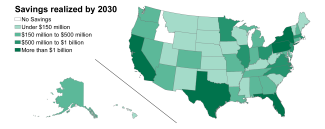
Expanding Access to Quality Pre-K is Sound Public Policy
December 16, 2013
In 2013, preschool education received more attention in the media and public policy circles than it has for some time, in part because of a series of high profile proposals to expand access to quality pre-K. The scientific basis for these pre-K proposals is impressive. This new working paper brings to bear the full weight of the evidence to address the following questions:
A statistical summary of studies since 1960 demonstrates that effects persist and provides evidence about what works (intentional teaching with small groups).
What are the estimated effects of state and local pre-K programs in more recent years?
We provide estimated effect sizes for school readiness at K and for later achievement from studies conducted over the past two decades. Effects vary across programs, but are overwhelmingly positive. Long-term achievement gains tend to be smaller, but still can be substantial.
Is Head Start ineffective?
A national randomized trial of children who attended Head Start in 2002 found modest initial effects and failed to detect lasting impacts. That study underestimates effects by design, its greatest limitation; nevertheless, the results were disappointing. Since then Head Start has been subject to reforms including a Bush Administration emphasis on improving literacy and an increase in the percentage of teachers with college degrees. Data collected in 2003, 2006, and 2009 reveal large increases in the size of Head Start children’s language and literacy gains between 2003 and 2009.
Can government improve the quality of public preschool education?
Head Start provides one example, as described above. New Jersey provides another. It raised standards and implemented a continuous improvement system that transformed early care and education for all 3- and 4-year-olds in 31 cities from poor/mediocre to good/excellent over eight years. The latest follow up on the New Jersey children finds large gains in achievement and school success through grade 5 associated with pre-K attendance.
If states expand pre-K with temporary federal matching funds, what happens to state education budgets when that federal money is no longer available?
Looking ahead to 2030 using Census projections for numbers of children, NIEER projects that all but 1 state would spend less on education from pre-K through grade 12 under federal proposals that incentivize states to raise pre-K quality standards, offer a full school day, and serve all children under 200 percent of the federal poverty level. Idaho is the only state that might have to pay a little more, because it has relatively low costs for school failure today.

Given the answers to these questions it seems self-evident that local, state, and federal governments should expand access to quality pre-K and other enhancements of early education, especially for children in low-income families. In our new working paper, we explore what the research says about the impacts and importance of high-quality pre-K and provide estimates of how much each state could save on education pre-K to grade 12 under provisions of the proposed federal pre-K plans. Read the full details in our new paper.
– W. Steven Barnett, NIEER Director
The Authors
W. Steven (Steve) Barnett is a Board of Governors Professor and the founder and Senior Co-Director of the National Institute for Early Education Research (NIEER) at Rutgers University. Dr. Barnett’s work primarily focuses on public policies regarding early childhood education, child care, and child development.
About NIEER
The National Institute for Early Education Research (NIEER) at the Graduate School of Education, Rutgers University, New Brunswick, NJ, conducts and disseminates independent research and analysis to inform early childhood education policy.

